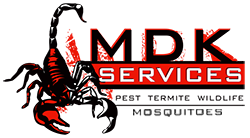Termites! Now What?
The advent of spring is generally welcome, but warmer temperatures also bring out unwanted pests, namely termites. Often, termite infestation shows up in the weeks following winter, when those destructive chewers begin swarming and forming new colonies.
Termites cause more than $5 billion in property harm each year, a cost not regularly secured under mortgage holders’ protection strategies, as per The National Pest Management Association. In fact, harm from termites is five times more probable than damage from a fire.
Termite Infestation – Entry Points
Chart of Common Termite Entry focuses, from EcoChoice :
Termites are busy 24 hours a day, seven days a week, quietly nourishing on the cellulose found in basic wood.
Termite Infestation – Subterranean Photo: backyardbio.dreamhosters.com
The initial phase in counteracting termite pervasion is perceiving the issue. Since termites work from the back to front, you may not see an indication of pervasion until the harm has been finished.
There are various types of termites in the U.S. Underground termites live underground or in wet, separated territories over-the-ground, upwards of two million to a province. Each measuring up to one creep long, these cream-shaded termites go along particular “mud tubes” through establishment breaks and extension joints, along pipes and electrical entrances, behind finish and anyplace wood meets the ground.
Termite Infestation – Dampwood. Photo: floridapest.com
Dampwood termites infest wood with high moisture content. Conehead termites, also known as “tree termites,” are an invasive species native to the Caribbean. Drywood termites infest dry wood and do not require contact with the soil.
Termite Baits. Photo: nachi.org
Once a termite infestation is present, professional help is necessary, and treatment is determined by the severity of the problem. The two major methods of elimination are termite baits and liquid termite treatments.
Termite baits are placed around the home and gradually eliminate the population as workers carry the pesticides back to the colony. Liquid treatments are sprayed around the home to kill and repel any termites coming into contact with the chemicals.
Another treatment option is borate. Typically used in new construction, borate is applied directly to the wood of the house as a coating.
Some treatment options work on specific species in specific geographical areas. For instance, fumigation, electrocution, and liquid nitrogen have been effective in controlling dry wood termites, common in Southern states. Heating and microwave treatments are used elsewhere.
Because termite damage can go undetected, the NPMA recommends an annual termite inspection by a licensed professional such as MDK Pest!
Here are some helpful tips:
• Carefully inspect the perimeter of the home for mud tubes and rotting wood.
• Make sure gutters and downspouts are unclogged and actively divert water away from your home’s foundation.
• Repair fascia, soffits, and rotted roof shingles.
• Keep basements, attics, and crawl spaces well-ventilated and dry.
• Maintain a one-inch gap between soil and wood portions of the home.
• Any wood in direct contact with the soil and your structure is vulnerable to termites. Store firewood at least 20 feet away from the house and before bringing it indoors, check the wood for pests.




